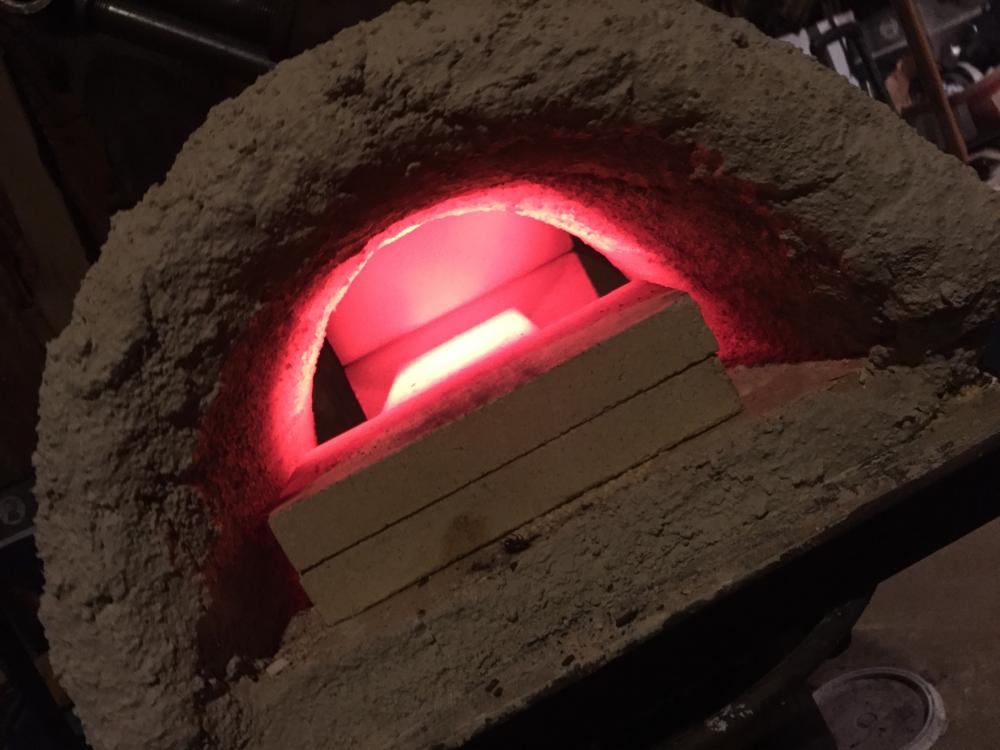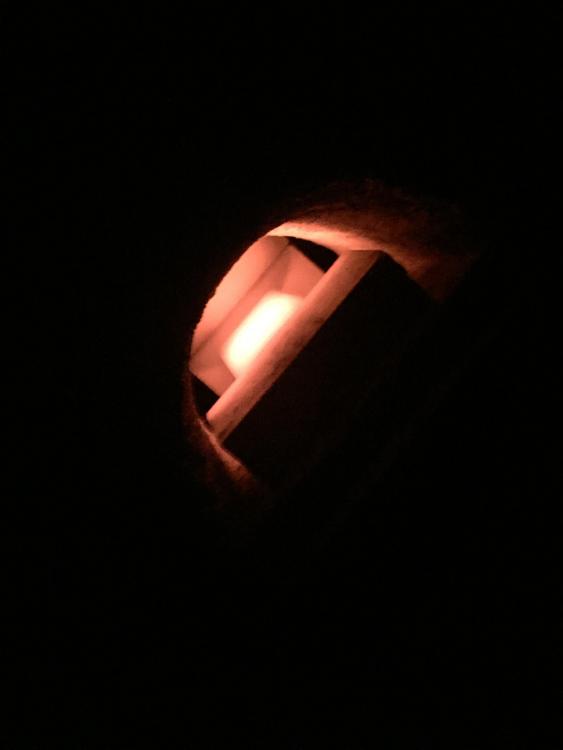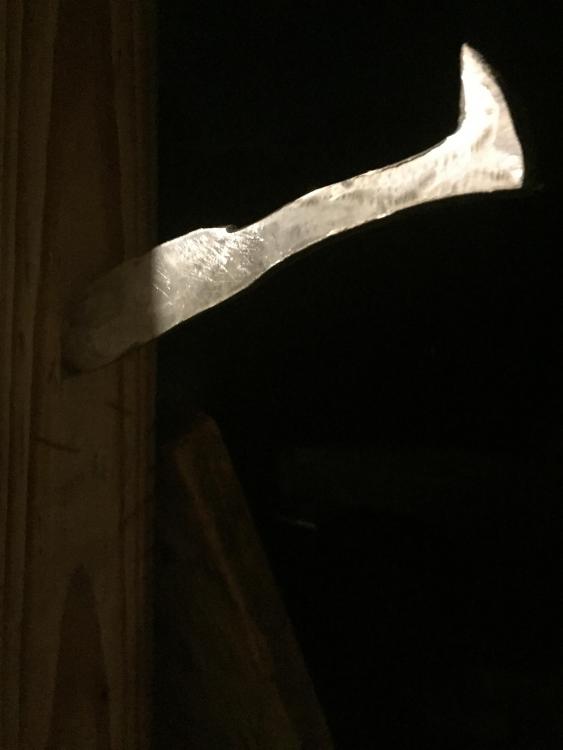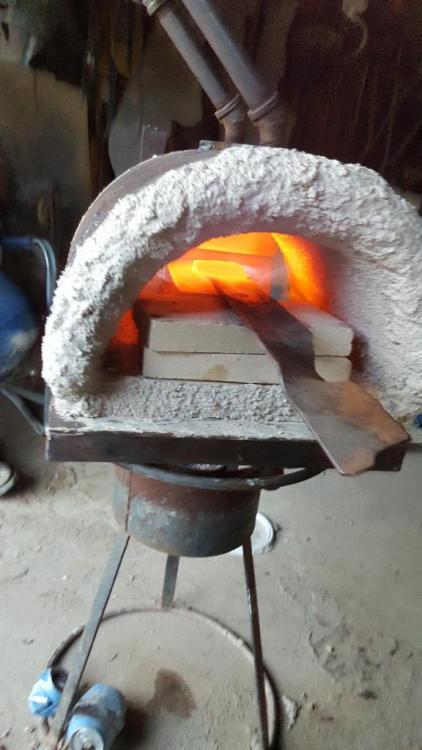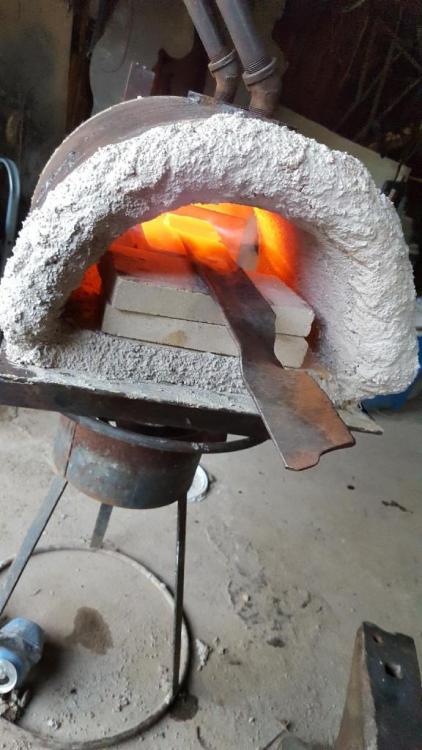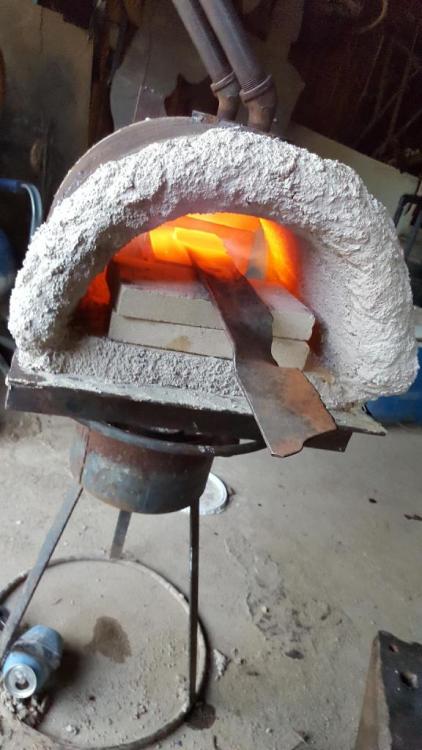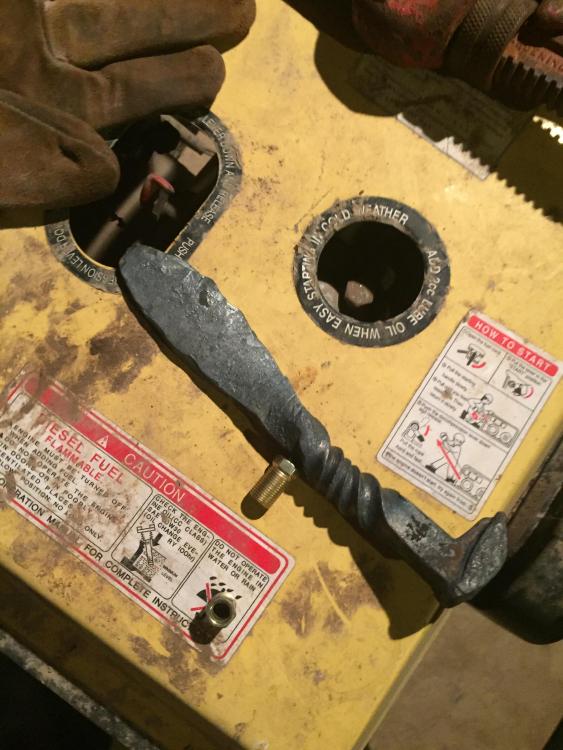-
Posts
28 -
Joined
-
Last visited
Content Type
Profiles
Forums
Articles
Gallery
Downloads
Events
Posts posted by Forgehermet
-
-
This was exactly the problem and it was fixed by putting the burner into the forge, though I am yet to weld it on

-
I have recently follow frosty's T burner plans and have one problem,my burner will be running good with dark and light blue flames it will suddenly go out and I would have to re light it. any advice on how to fix this would be greatly appreciated, thanks in advance

-
Thanks will do
-
This was what I have in it now, I guess I'll see how it holds up
 the first picture is what I got to replace it, should I return it?I have not opened it yet.
the first picture is what I got to replace it, should I return it?I have not opened it yet. -
-
Thanks I ended up with two inches of wool and Putin refractory but I guess I put in the wrong refractory
 since it was firebrick repair
since it was firebrick repair
-
I already have it
 it was all I could get around herewehave already layered my forge with it, is this something I could fix?
it was all I could get around herewehave already layered my forge with it, is this something I could fix?
-
Ahh I am looking for rock hard and it is about 80 degrees daily here my refractory is standard "firebrick repair" Rutland refractory cement
-
How long does one inch thick castable refractory take to dry
-
Thank you, I found frosty's instructions on this forum and that is what I think I'll do!

-
Would one inch kaowool work is is two inches a must? And I looked at your t burner designs, frosty and I think that is what I will try if you think that will work.what else would you recommend for a forge outline that would replace the tubing.
-
I do not yet but plan on getting one soon
-
On 3/4/2009 at 6:14 PM, jhbruce4 said:
i just purchased a vulcan brand anvil. it has a 12 on one side and a 43 on the other side. can anyone tell me how old it is , how much it weighs and what is the value. the edges are sharp. thank.s
It is 120 lbs and probably made in 1943
-
Ok good idea never thought about that
 I also plan on being able to shut gas off to burners if they are not in use
I also plan on being able to shut gas off to burners if they are not in use
-
Mainly I want the cheapest to build, and I have lousy shop skills but my dad is helping a bunch with everything. I am good at following plans. We have a lot of tools at our disposal including but not limited to drills cutoff saws angle grinders blow torches stick welder etc. and I never thought about moving it back and forth through the forge. How long should I cut it to and how many burners should I have, I hope to be able to use this forge for a long time on a variety of things throughout its life, including jewelry, and large and small knives and axe heads and possibly larger stuff like a machete
-
In my previous post I learned that my oddball burners probably would not get hot enough for a forge so now I am wondering what the cheapest burner design that runs on propane is. My forge is 28"x8"x8", and I would also like to know how many burners I should have in my new forges construction.
-
Thank you for the advice buzzkill
-
It was given to me and I hope to use it whole and not cut it
-
I'm not sure about the pressure but they use propane and I hope to be able to do general bladsmithing
-
I am putting my gas forge together and I only have ribbon burners. They are three connected together each being about 17 inches long. My forge is a 8x8x28 inch square tube that I plan to insulate with refractory cement and one inch of kaowool.how thick should my cement be and how should I arrange my ribbon burners to prevent melting and get maximum heat? I am fin with using less than three burners if I should.
-
10 minutes ago, Daswulf said:
Uhh... Is that even possible? Well, maybe not for those of us that can't stop adding to ours lol.
And it's a resource pile (scrap pile is acceptable too) but it's not junk.

Great point, from now on it is a resource pile!
-
On 6/4/2017 at 11:33 AM, ThomasPowers said:
Cutting edges and wear edges (soil contact) were traditionally made of high carbon steels good for knifemaking. However in modern times there are new alloys like the boron varieties that will not be as good for knifemaking and blacksmithing techniques will not work well---like high speed steel chipper blades. Some traction items were good medium to higher carbon steel for strength---like 1080.
So got a junkpile? Learn the junkyard test rules and test before you forge! (things like potato digger bars that were 1090 at times and now 5160 or ???, Disks, Harrow teeth, equipment springs, old hay rake tines. etc. Test a bunch of stuff and remember that is no guarantee that two "identical" items were made from the same steel---I've run into some great depression stuff where a repaired item had one bar was real wrought iron and the other "identical" bar was high carbon steel.
Yes I do have a junk pile and I plan to eventually use all of it
 . I have multiple lawn mower and bushhog blades as well as rebar and a LOT of horseshoes.
On 6/4/2017 at 0:01 PM, Frosty said:
. I have multiple lawn mower and bushhog blades as well as rebar and a LOT of horseshoes.
On 6/4/2017 at 0:01 PM, Frosty said:RR spikes are good for lots of things in the beginner's project book. They make excellent wall hooks for the: barn, shed, porch, etc. the head turned up for the finial on the hook, the shaft can be drawn wider or longer or twisted, most anything you like and punched for the mounting screws. Spikes make nice garden tools as well.
I usually like to start folk off on lighter stock, around 3/8" sq. or 1/2" round. It's light enough to make finished projects from without tiring yourself too quickly and is heavy enough to hold it's heat long enough to get in a few blows.
Potato chain bars are excellent stock for the smithy. It's medium carbon for flexible strength so it's perfect for making tongs and if you grow spuds you probably have piles of the things.
On a personal development note. Pay attention to yourself. Do NOT push on when you get tired that's a good way to cause joint injuries and have accidents while ruining projects and learning bad habits. Build up to the work, you're not on a time clock don't rush. Also don't go find a HEAVY hammer. Any smooth faced 2lb. is a good weight to start with. I usually start folk out with a 32oz. Drill hammer, 2lbs. is enough to do good work and a drill hammer has a shorter handle making it easier to control.
Being good at the anvil is about CONTROL not strength and whopping big hammers and hard blows. Good useful hammer types are: Drill, cross pein, straight pein, ball pein and rounding (or turning) hammers. Rounding hammers are becoming the go to hammer for most folks, they're very effective for general forging.
Frosty The Lucky.
I have a 3lb cross pein and two ball peins the larger one being around a pound and the other is smaller than that.
-
I live on a farm, any metals(bushhog blades, tractor pins, etc) that you recommend I start collecting now for later use in bladesmithing.
-
Any ideas on what to make with them?

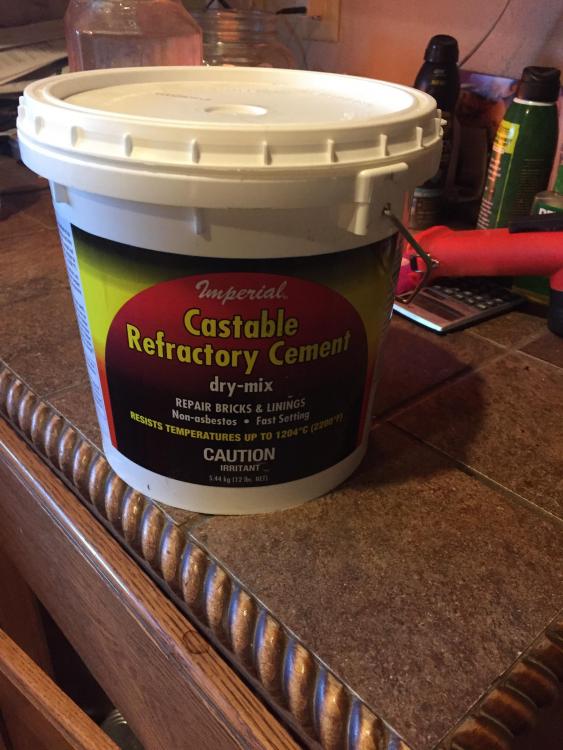
My forge
in Gas Forges
Posted
I would like to thank everyone who helped me with putting my forge together, with all of your help and advice I have finally become a true blacksmith!( the first three pics are after using it for four or five hours and turning the flame off) I would like to especially thank frosty Thomas powers and buzzkill for the advice
![]()
